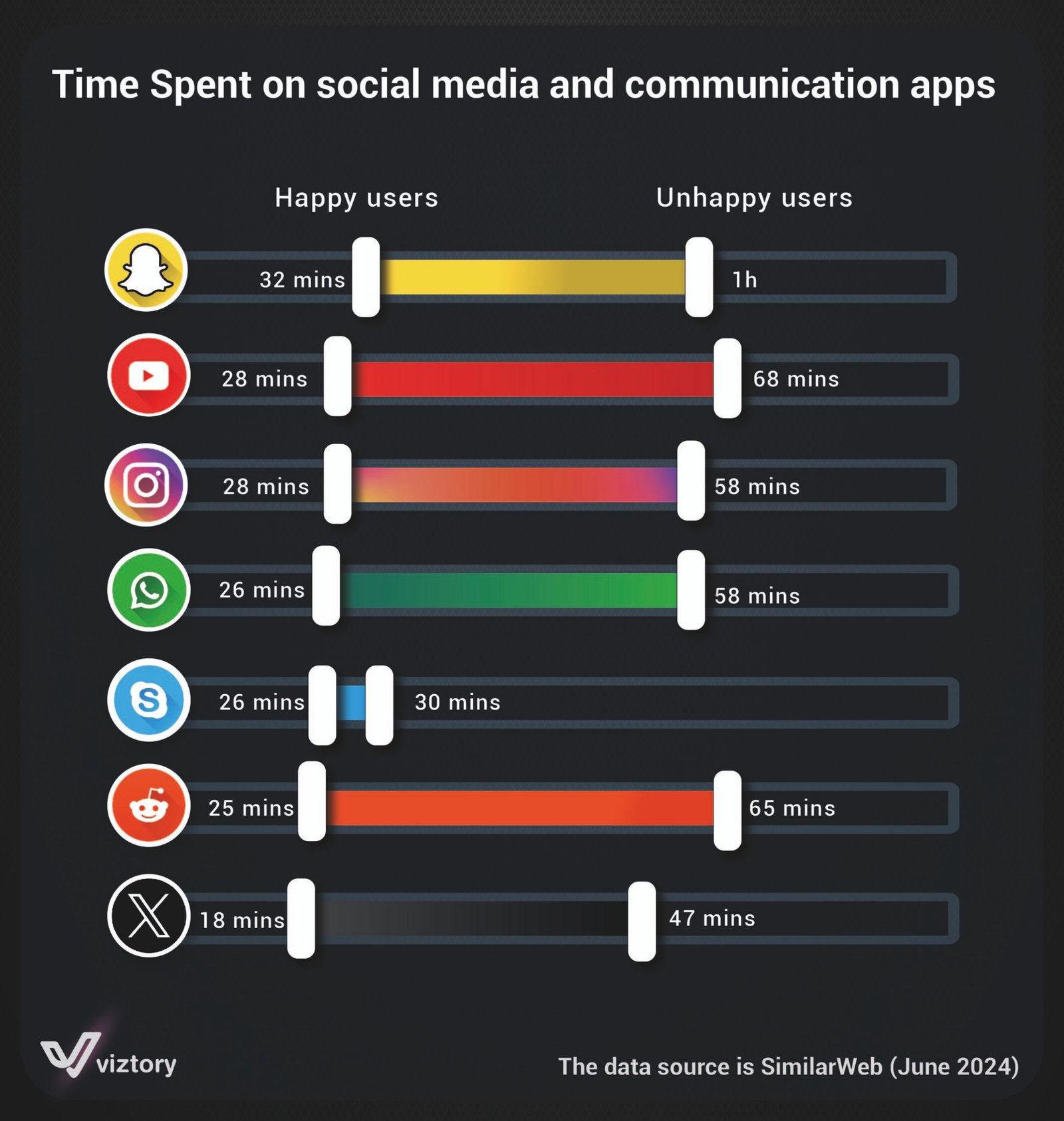The Impact of Social Media on Mental Health and User Experience
-
Aug, Wed, 2024
The Impact of Social Media on Mental Health and User Experience
In the modern digital age, social media has become an integral part of our daily lives. We spend long hours browsing and interacting with content and others through various social media apps. But what is the impact of this usage on our mental health? How does the experience differ between happy and unhappy users? This disparity is clearly illustrated by the image showing the differences in social media usage time between the two groups.
Analysis of Time Spent on Different Apps
The image shows a comparison between the time happy and unhappy users spend on a variety of social media and communication apps. Generally, unhappy users tend to spend more time on these apps compared to happy users. For example:
- Snapchat: Happy users spend about 32 minutes per day, while unhappy users spend around an hour.
- YouTube: Happy users spend 28 minutes per day, compared to 68 minutes for unhappy users.
- Instagram and WhatsApp: Both show a significant difference where happy users spend about 26-28 minutes, while unhappy users spend 58 minutes on each.
- X (formerly Twitter): There is also a large difference where happy users spend only 18 minutes, while unhappy users spend 47 minutes.
The Relationship Between Mental Health and Social Media Usage
These numbers suggest a possible link between excessive social media use and feelings of unhappiness. Although these apps provide means for communication and entertainment, excessive use can lead to negative consequences for mental health, such as anxiety, depression, and feelings of isolation.
On the other hand, moderate use of these apps can serve as a means to enhance social communication and alleviate feelings of loneliness. Allocating a reasonable amount of time for using these apps can help maintain psychological balance.
Impact of These Findings on Healthcare
In the healthcare field, providers should be aware of the impact of social media use on mental health. The time individuals spend on these apps can serve as an additional indicator to assess their psychological state. Providers can also encourage individuals to engage in alternative activities that promote mental health, such as exercise, reading, or direct social interactions.
In conclusion, this analysis highlights the need to handle social media with caution and moderation. Understanding the relationship between time spent on these apps and mental state can help individuals achieve a more positive and balanced experience with technology.

